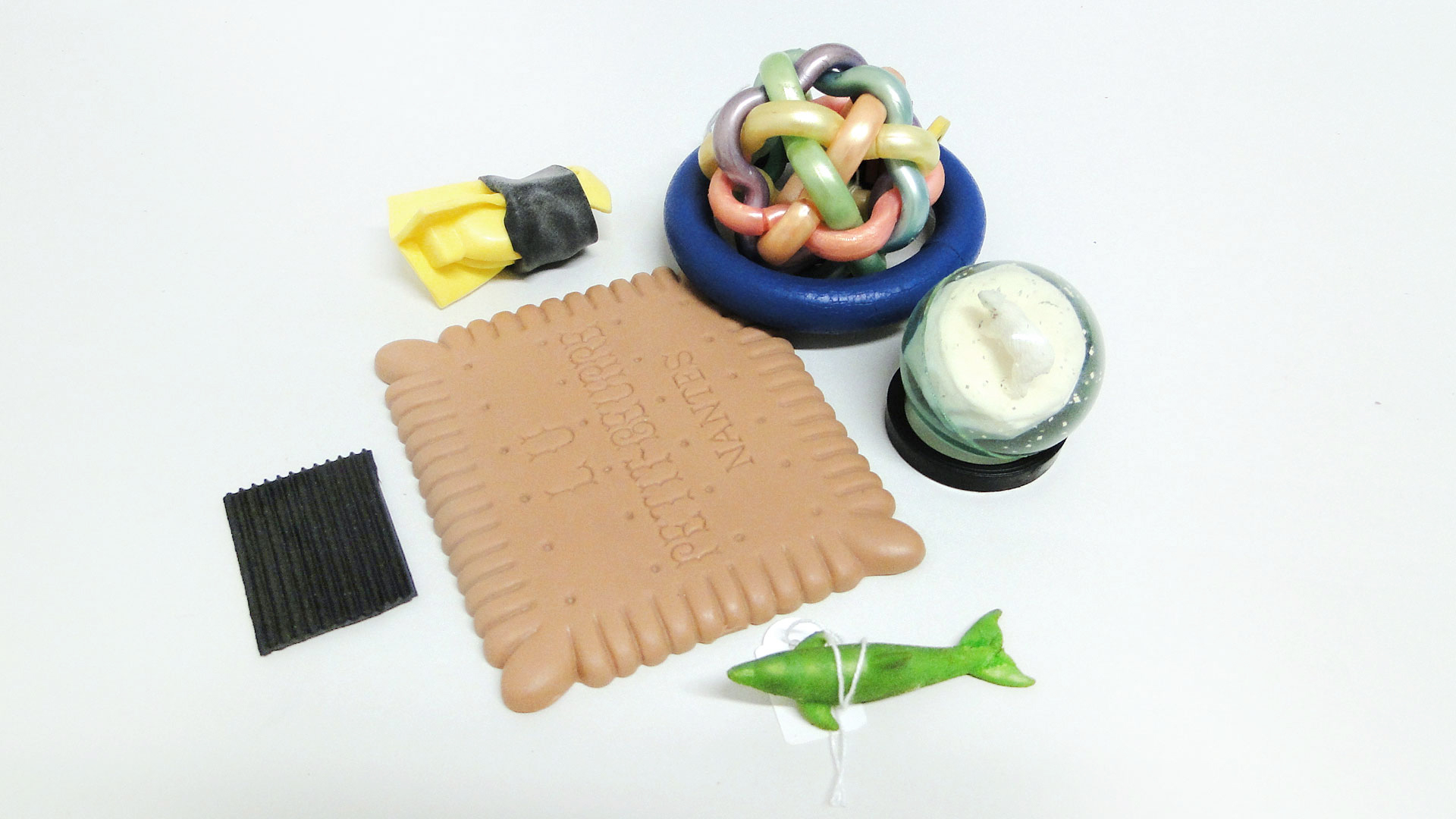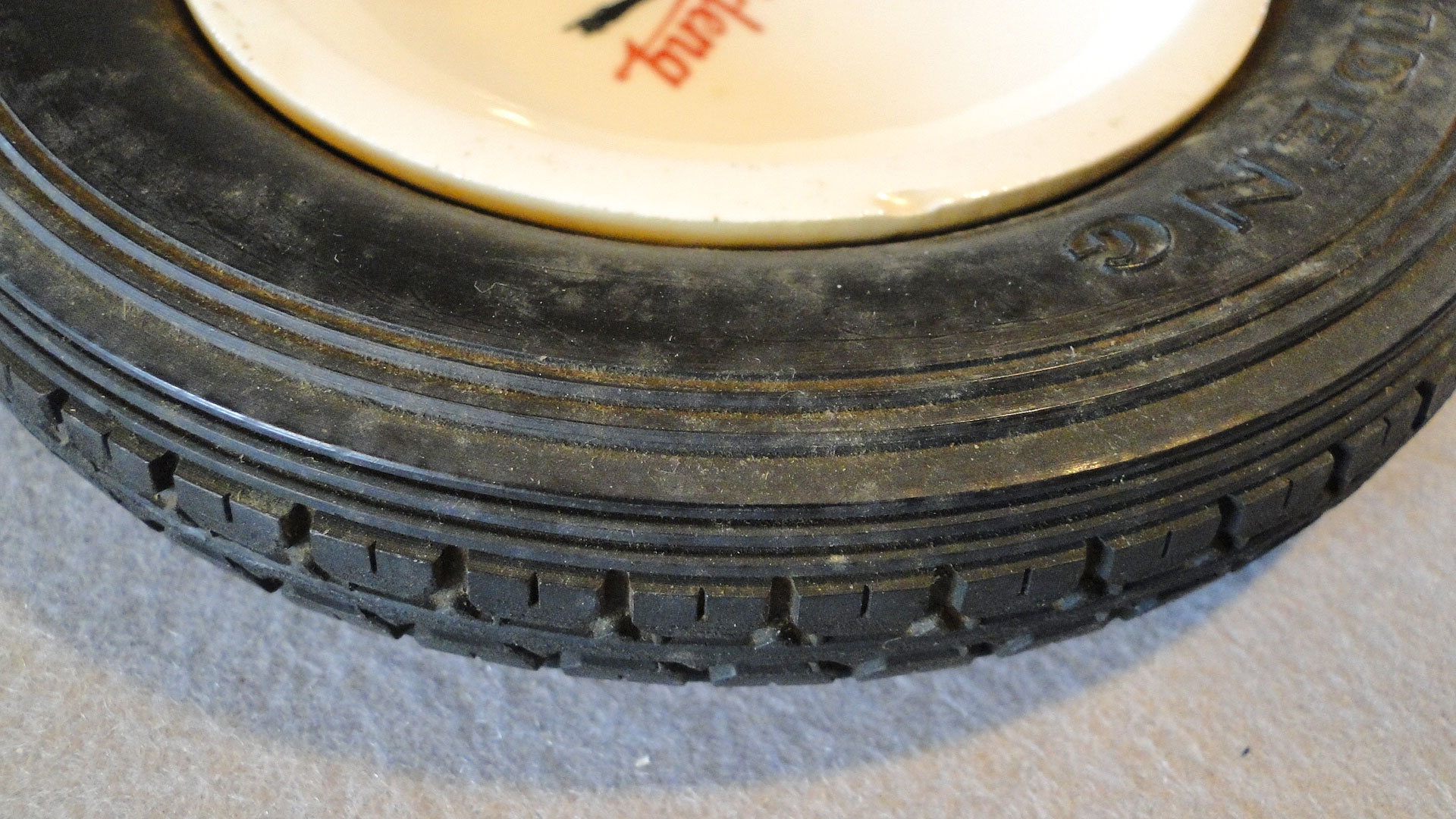Plastics
Synthetic rubber (SR)
General information
Description
Synthetic rubber is a generic term for different rubbers that are all man-made. It is difficult to tell them apart, also because they contain various additives. Many synthetic rubbers are black due to the addition of carbon black which also serves as a stabilizer. To the group of synthetic rubbers belong: ethylene propylene diene monomer (EPDM), ethylene vinyl acetate (EVA), styrene butadiene styrene (SBS), styrene butadiene ethylene styrene (SEBS), styrene butadiene rubber (SBR), nitrile butadiene rubber (NBR), butyl rubber (IIR), polychloroprene (CR), polybutadiene (BR) and isoprene rubber (IR). Synthetic rubbers often smell of new car tyres and feel rough. They are not transparent and can, when in good condition, stretch somewhat. When the elastomer can be compressed easily like sample E-04 in the PIT-Kit, it is SEBS.History
In 1910 polybutadiene was first synthesized and came into production as a substitute for natural rubber. In 1930 chloroprene (neoprene) was discovered. In 1941 NBR entered the scene and in 1942 SBR and IIR became commercially available. EPDM has been produced since 1962. Nowadays SEBS is a common replacement of PVC in toys.Production, Application, Appearance
Identifying the various elastomers is difficult. Therefore, they have been grouped based on their application. Synthetic rubbers are used in automobile tyres, shoe soles, boots, technical products such as hoses, tubing, seals, weather strips, and shock absorbers and for military purposes. Upon degradation SRs become soft and tacky, become hard and develop cracks in a pattern that looks like 'elephant skin'.Properties
Material properties
ElastomerDensity: CR: 1.22-1.25; EPDM: 0.85-0.90; IIR: 0.917 - 0.92; NBR: 0.92-1.01; SBR: 0.91-0.96 g/l
Melting point: CR: 45-92°C; EPDM: °C; IIR: 1.5°C; NBR: °C; SBR: °C
Glass transition temperature: CR: -46 to -25°C; EPDM: -69 to -48°C; IIR: -71 to -65°C; NBR: -60 to -10°C; SBR: -55 to -25°C
Identification properties
Cell structure (foam): closedSmell: new car tyres
Touch: rough feeling
Sound: no characteristic sound
UV-radiation (when clear): not applicable
Polarizing filters (when clear): not applicable
Degradation
Process
Photo-oxidation, oxidation by ambient oxygen and ozone, soiling (tacky surface), absorption / desorption of moisture, depolymerisation catalysed by metals.Details
Synthetic rubbers are not considered problem plastics. Their degradation proceeds similarly to natural rubber but at a much slower rate.Symptoms
Yellowing; surface becomes tacky followed by the material becoming harder and more brittle; loss of mechanical properties such as flexibility and deformation; formation of fractures, cracks and tears; migration of additives which can form a white bloom on the surface. Foams can discolour, harden and ultimately crumble.Susceptibility
UV-radiation: HighLight: High
Oxygen/Ozone: High
Temp: Low
RH: Medium
Preventive conservation
Recommendations
UV-RADIATION: keep below 10 µW/lm Exclude UV with filters or no-UV light sourceLIGHT: 1 slight change in approx. 1 Mlx.h Limit light dose by reducing intensity and exposure time
OXYGEN / OZONE: store and exhibit in low oxygen atmosphere if possible
TEMP: common indoor conditions 10-30°C
RH: common museum conditions 40-60% RH fluctuations: setpoint ±10% or ±5% when allowing seasonal fluctations between 35-65%
Other names
- Poligon (EPDM)
- Nordel (EPDM)
- Vistalon (EPDM)
- Buna (EPDM)
- Buna SE (SBR)
- Krynac (NBR)
- Baymod N (NBR)
- Butyl rubber (IIR)
- Butyl (IIR)
- Neopreen (CR)
- Ethyleen Propyleen Dieen Monomeer (EPDM)
- Styreen Butadieen Rubber (SBR)
- Nitril Butadieen Rubber (NBR)
- Polychloropreen (CR)
- Polybutadieen (BR)
- Isopreen rubber (IR)
Am I dealing with...
TAGS
- Closed cell structure
- Hard (due to degradation)
- Hard and sandy
- Sticky
- Crumbly
- Elephant skin
- Skin
- Rubbery odor




